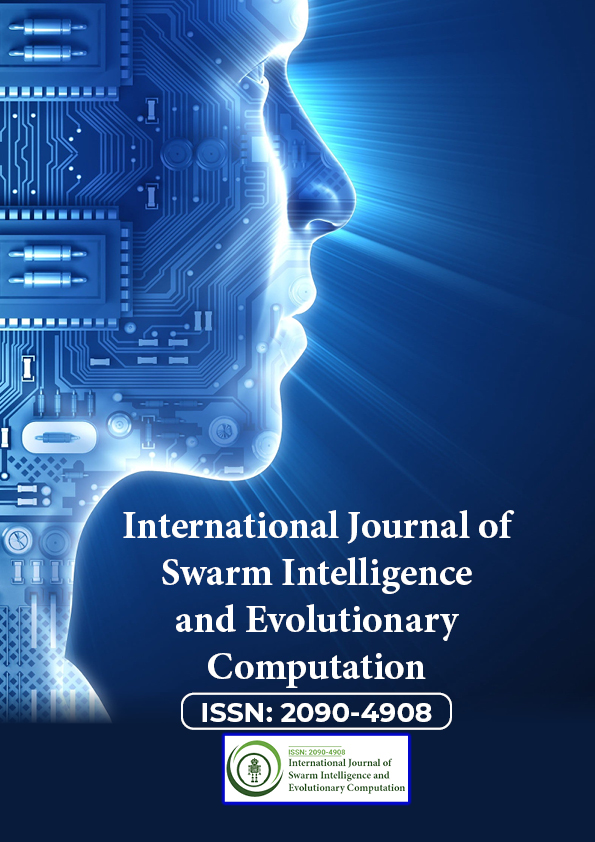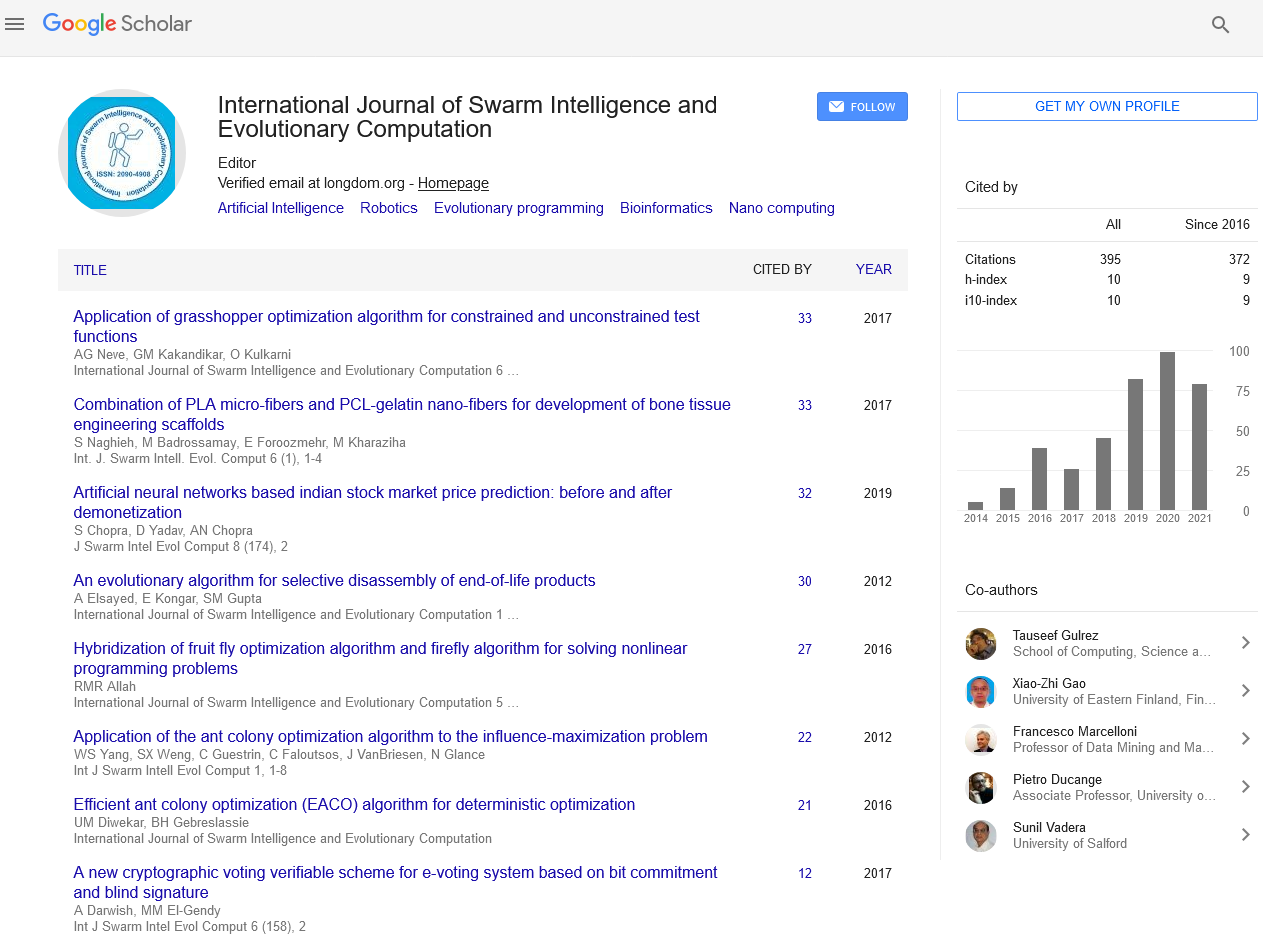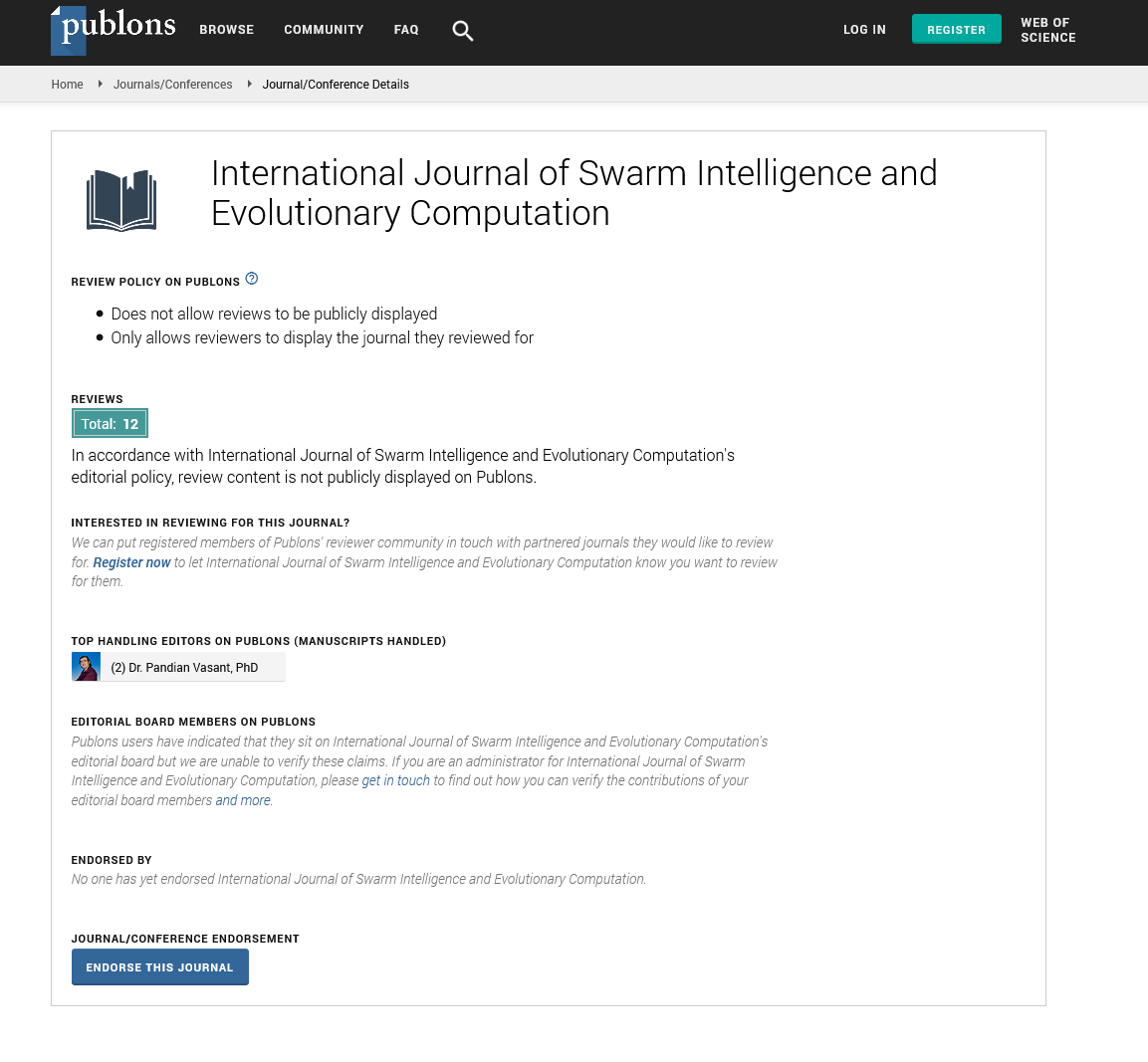Indexed In
- Genamics JournalSeek
- RefSeek
- Hamdard University
- EBSCO A-Z
- OCLC- WorldCat
- Publons
- Euro Pub
- Google Scholar
Useful Links
Share This Page
Journal Flyer

Open Access Journals
- Agri and Aquaculture
- Biochemistry
- Bioinformatics & Systems Biology
- Business & Management
- Chemistry
- Clinical Sciences
- Engineering
- Food & Nutrition
- General Science
- Genetics & Molecular Biology
- Immunology & Microbiology
- Medical Sciences
- Neuroscience & Psychology
- Nursing & Health Care
- Pharmaceutical Sciences
Perspective - (2024) Volume 13, Issue 2
Unleashing the Potential of Neural Networks: Principles, Architectures and Perspectives
Edward Samuels*Received: 01-Mar-2024, Manuscript No. SIEC-24-25337; Editor assigned: 04-Mar-2024, Pre QC No. SIEC-24-25337 (PQ); Reviewed: 18-Mar-2024, QC No. SIEC-24-25337; Revised: 26-Mar-2024, Manuscript No. SIEC-24-25337 (R); Published: 04-Apr-2024, DOI: 10.35248/2090-4908.24.13.362
Description
Neural Networks (NNs) represent a fundamental paradigm in machine learning, drawing inspiration from the structure and function of biological neural networks. From their inception to their current state-of-the-art implementations, NNs have revolutionized fields such as image recognition, natural language processing, and predictive analytics. This section introduces the core concepts and historical context of Neural Networks, setting the stage for a detailed exploration.
Foundational principles of neural networks
At the heart of Neural Networks lie several foundational principles:
Neurons and layers: Neural Networks consist of interconnected neurons organized into layers, including input, hidden, and output layers.
Activation functions: Neurons apply activation functions to introduce non-linearity into the network's computations, enabling complex mappings between inputs and outputs.
Weights and biases: Connections between neurons are characterized by weights and biases, which are adjusted during training to optimize network performance.
Feedforward and backpropagation: Feedforward propagation involves passing inputs through the network to generate predictions, while backpropagation adjusts weights and biases based on prediction errors to improve accuracy during training.
Diverse architectures of neural networks
NNs encompass a variety of architectures tailored to specific tasks and data types:
Multilayer Perceptrons (MLPs): Standard feedforward NNs with one or more hidden layers, suitable for general-purpose learning tasks.
Convolutional Neural Networks (CNNs): Specialized for image processing tasks, CNNs utilize convolutional layers to extract spatial features from input images.
Recurrent Neural Networks (RNNs): Designed for sequential data processing, RNNs incorporate feedback loops to process sequences of inputs, making them suitable for tasks such as time series prediction and natural language processing.
Generative Adversarial Networks (GANs): Comprising a generator and a discriminator network, GANs are used for generating synthetic data and enhancing data augmentation techniques.
Training methodologies and optimization techniques
Training Neural Networks involves optimizing their parameters to minimize prediction errors:
Gradient descent: A fundamental optimization technique used to adjust network parameters in the direction of steepest descent of the loss function.
Stochastic Gradient Descent (SGD): An extension of gradient descent that updates parameters using small, randomly selected batches of training data to accelerate convergence.
Regularization techniques: Methods such as dropout and L1/L2 regularization are employed to prevent overfitting by penalizing complex models.
Advanced optimization algorithms: Techniques like Adam, RMSprop, and AdaGrad adaptively adjust learning rates during training to improve convergence and stability.
Applications of neural networks
NNs find applications across diverse domains, including:
Computer vision: Image classification, object detection, facial recognition, and image generation.
Natural Language Processing (NLP): Text classification, sentiment analysis, machine translation, and chatbots.
Healthcare: Disease diagnosis, medical imaging analysis, drug discovery, and personalized treatment recommendations.
Finance: Stock market prediction, fraud detection, credit risk assessment, and algorithmic trading.
Autonomous systems: Autonomous vehicles, robotics, and intelligent control systems.
Recent advancements and future prospects
Recent advancements in neural networks include:
Deep learning: Increasing depth and complexity of NN architectures through deep learning techniques, leading to improved performance in various tasks.
Transfer learning: Leveraging pre-trained NN models and finetuning them for specific tasks to overcome data scarcity and accelerate training.
Neurosymbolic AI: Integrating symbolic reasoning with neural computation to develop more interpretable and explainable AI models.
Continual learning: Enabling NNs to learn continuously from streaming data and adapt to changing environments without catastrophic forgetting.
Conclusion
In conclusion, Neural Networks represent a cornerstone of modern artificial intelligence, offering unparalleled capabilities in data processing, pattern recognition, and decision-making. From their humble beginnings to their current state-of-the-art implementations, NNs continue to push the boundaries of what is possible in AI research and applications. As research and development in Neural Networks progress, they hold the promise of unlocking new frontiers in AI, driving innovation, and transforming industries across the globe.
Citation: Samuels E (2024) Unleashing the Potential of Neural Networks: Principles, Architectures and Perspectives. Int J Swarm Evol Comput. 13:362.
Copyright: © 2024 Samuels E. This is an open-access article distributed under the terms of the Creative Commons Attribution License, which permits unrestricted use, distribution, and reproduction in any medium, provided the original author and source are credited.


